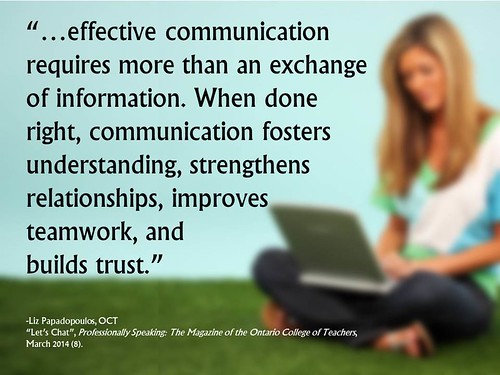Schoology is the LMS that I chose for
my Navigate quest. The following are the academic features offered
in this system:
Schoology aggregates all the academic information in one
easy-to-use, familiar interface.
Schoology makes creating unique and flexible course profiles
simple with a whole suite of student-centric content creation and
learning tools and an easy-to-use, intuitive interface.
- Flexible Instructional Tools
Schoology empowers instructors with the tools to easily
differentiate instruction, pace students individually, and implement
group-based learning.
With the ability to create custom badges using a choice of shapes,
colors, and any image or animated GIF available on the web, educators
are better able to build incentive and reinforce positive behavior in
a fun way.
Schoology's calendar is an easy-to-use, robust way to manage
personal and course events, ensuring communication for all.
Schoology’s calendars are color coded, provide automatic updating,
and can synchronize with other web-based calendars such as Microsoft
Outlook or Google Calendar.
- Online Assignment Submissions
Schoology's Assignment Submissions feature simplifies and
centralizes the process of submitting, annotating, grading, and
returning assignments so there's no unnecessary repetition.
- Create Assignments and Events
Schoology’s robust content creation tools and user-friendly
interface make creating diverse assignments and events simple.
Created assignments and events are automatically organized in the
course, group, and personal calendars.
Schoology’s assessment creation tools provide instructors with
simple ways to create media-rich assessments using new, repurposed,
and standards aligned content.
Schoology supports Common Cartridge, Web Content, QTI-compliant
content, and other ZIP files to ensure that educators and
administrators can use their existing third-party content in
Schoology without losing its formatting.
Native mobile apps extend this award-winning LMS to all iOS,
Android, and Kindle Fire mobile devices for free, enabling
cost-effective 1:1 and BYOD initiatives. Everything from assessment
creation, submission, and grading to media-rich discussions are
easily achieved from a mobile device.
- Online Gradebook and Attendance
Schoology’s Gradebook and Attendance save time by automating the
redundant tasks of inputting grades and taking attendance. The
gradebook offers custom grading scales and easily editable settings.
- Customized Grading Options
Schoology provides the tools to create custom grading scales. The
easily editable settings make it possible to create rubrics as well
as customize percentage scales and point-based scales.
- Standards and Outcomes Alignments
Schoology enables instructors and curriculum specialists to easily
align content, assessments, and rubrics to Common Core, State
Standards, or custom learning outcomes. Standards or outcomes-aligned
test and quiz questions can also be archived for quick and efficient
assessment creation.
- Track Student Usage and Course Analytics
With individualized and course-wide analytics presented in an
easily read format, Schoology helps better understand students’
needs and develop strategies that improve their engagement and
comprehension.
Schoology's App Center provides educators and institutions with
access to high-quality instructional and management applications that
are seamlessly integrated into the platform.
- Email Address and Username Support
Schoology lets students choose whether they would like to login
with a username or an email address. This makes it easy to use
Schoology with students that might not have an email address.
This LMS also offers valuable social
features that are necessary to effectively host and facilitate an
online course:
- User Connections (Professional
Networks)
Schoology lets educators collaborate and share instructional
resources with colleagues in your school and other schools around the
world.
Schoology facilitates better communication by providing
instructors a way to send messages and share resources efficiently
with their students and peers, and by providing students a simple and
safe way to contact their instructors.
- Customizable Notifications
Schoology makes staying connected simple with email and SMS text
notifications so everyone is always up to date.
Schoology's announcement feature turns any update into an
announcement with one click, pinning it to the top of the activity
feed so everyone gets the message.
With Schoology, instructors can create interactive discussion
pages, engaging students on a more personal level. Discussions are
threaded to allow for easy replying and organization.
A wide range of files (including documents, pictures, audio, and
video files) can be attached to any post. Instructors can also
connect their discussion pages with other class sections and courses
for a more widely interactive experience.
- Group Workspaces (Collaboration)
Schoology’s learning environment facilitates collaboration on a
number of different levels. Students and instructors can collaborate
easily with each other and their peers by participating in live
discussions, sharing resources and ideas, and much more.
From a language teacher's perspective, of all the tools listed
above, the most valuable ones in an online learning environment are
those that maximize student interaction and engagement. When
students have more opportunities to participate in discussions and
collaborate together using the target language, they gain a deeper
understanding of the language and its culture.
References
https://www.schoology.com/home.php































